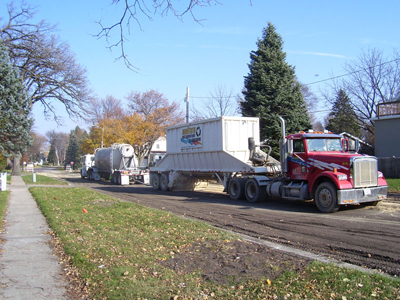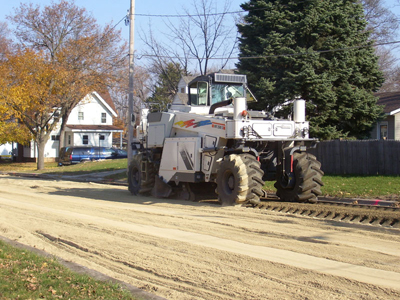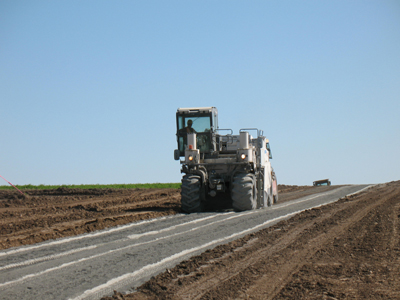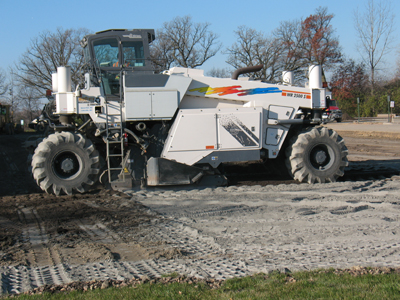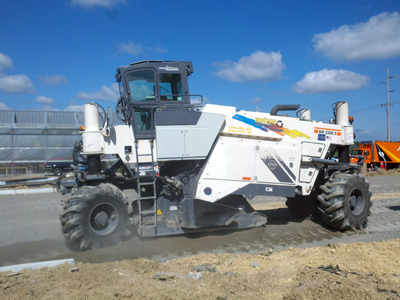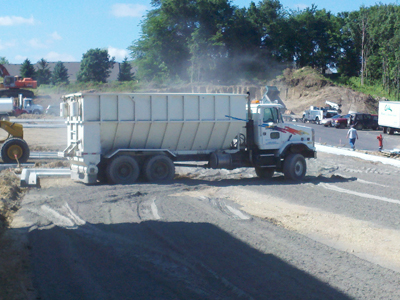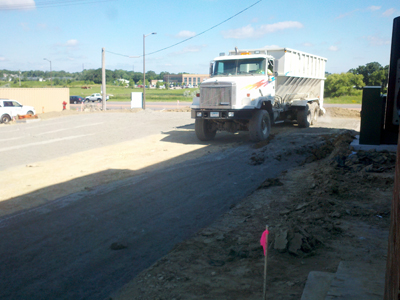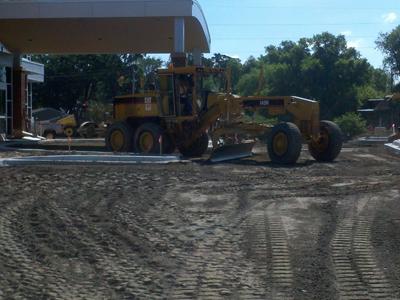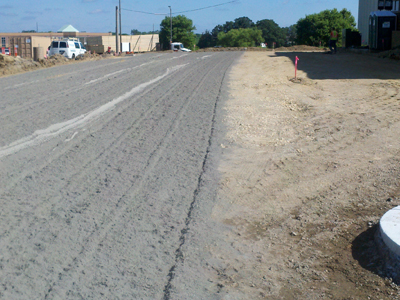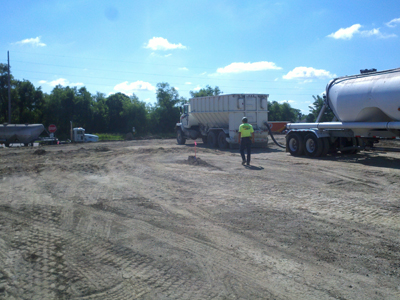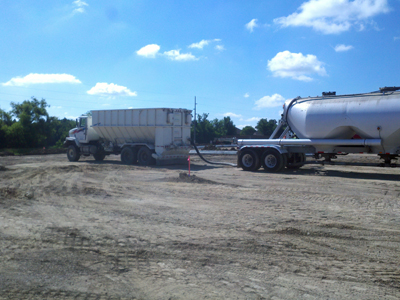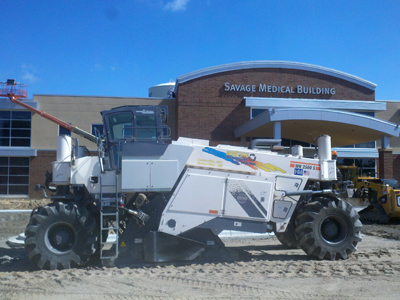What is Soil Stabilization?
Soil Stabilization is the alteration of soils to enhance their physical properties. Stabilization can increase the shear strength of a soil and/or control the shrink-swell properties of a soil, thus improving the load bearing capacity of a sub-grade to support pavements and foundations.
Soil Stabilization can be utilized on roadways, parking areas, site development projects, airports and many other situations where sub-soils are not suitable for construction. Stabilization can be used to treat a wide range of sub-grade materials, varying from expansive clays to granular materials. This process is accomplished using a wide variety of additives, including lime, fly-ash, and Portland cement. Other material byproducts used in Stabilization include lime-kiln dust (LKD) and cement-kiln dust (CKD).
What are the benefits of Soil Stabilization?
Benefits of Midstate’s Soil Stabilization process can include:
• Higher resistance (R) values
• Reduction in plasticity
• Lower permeability
• Reduction of pavement thickness
• Elimination of excavation, exporting unsuitable material and importing new materials
• Aids compaction
• Provides “all-weather” access onto and within project sites
In addition, there are several environmental advantages. When unimproved roadways are stabilized and treated with the right additives, run-off of storm water will not cause erosion, which in turn sends thousands of tons of silt into our rivers and bays. This erosion clogs and silts vital waterways and fish habitat that would have been spawning grounds for future generations. Our Soil Stabilization methods help to preserve soils, water ways, unimproved roadways and much more.
What is the Soil Stabilization Process?
Proper design and testing is an important component of any stabilization project. This testing will establish proper design criteria in determining the proper additive and admixture rate to be used to achieve the desired engineering properties. It is imperative to solicit the expert advice and engineering knowhow of a certified Geotechnical Engineer for all Soil Stabilization work. Having a Geotechnical Engineer is one of the most important components of a successful project.
Soil Stabilization is performed in much the same manner as Full Depth Reclamation.
A reclaiming machine first pulverizes the soil material in question.
An additive is then placed on top of this material. This additive is mixed and re-mixed with the soil until the desired properties are achieved.
The new base is shaped by a motor grader to the proper profile and compacted.
The building pad or roadway materials are added to the specifications or design.
This process can vary depending on the soils and additives required. Soil Stabilization can be utilized on roadways, parking lots, site development projects, and in many other situations where sub-soils are not suitable for construction.
What is Soil Modification?
Another form of soil treatment closely related to Soil Stabilization is Soil Modification (sometimes referred to as “mud drying” or soil conditioning). Although some stabilization inherently occurs in Soil Modification, the distinction between the two is that Soil Modification is merely a means to reduce the moisture content of a soil to expedite construction. Alternatively, Soil Stabilization can substantially increase the shear strength of a material such that it can be incorporated into the project´s structural design. The determining factors associated with Soil Modification versus Soil Stabilization may be the existing moisture content, the end use of the soil structure, and ultimately the cost benefits provided.

